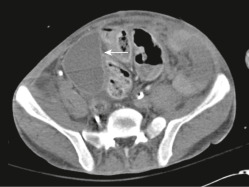AUTHORS: Ella Stern, MD, and Marwan Ma’ayeh, MD
Definition
Pelvic abscess is an acute or chronic infection, most commonly involving the pelvic viscera. Treatment requires directed therapy including broad-spectrum antimicrobials and, if medical therapy fails, surgical intervention. There are four categories based on etiologic factors:
- Ascending infection, spreading from cervix through endometrial cavity to adnexa, forming a tuboovarian complex
- Infection occurring in the puerperium, which spreads to the adnexa from the endometrium or myometrium by a hematogenous or lymphatic route
- Abscess complicating pelvic surgery
- Involvement of the pelvic viscera as a result of spread from contiguous organs, such as appendicitis or diverticulitis
Synonyms
| ||||||||||||||||||||||||||||||||||||
Etiology
- Mixed flora of anaerobes, aerobes, and facultative anaerobes, such as Escherichia coli, Bacteroides fragilis, Prevotella spp., aerobic streptococci, and Peptococcus and Peptostreptococcus spp.
- Neisseria gonorrhoeae and Chlamydia are the major etiologic bacteria in cervicitis and salpingitis but are rarely found in abscess cavity cultures.
- In elderly patients consider diverticular disease.
